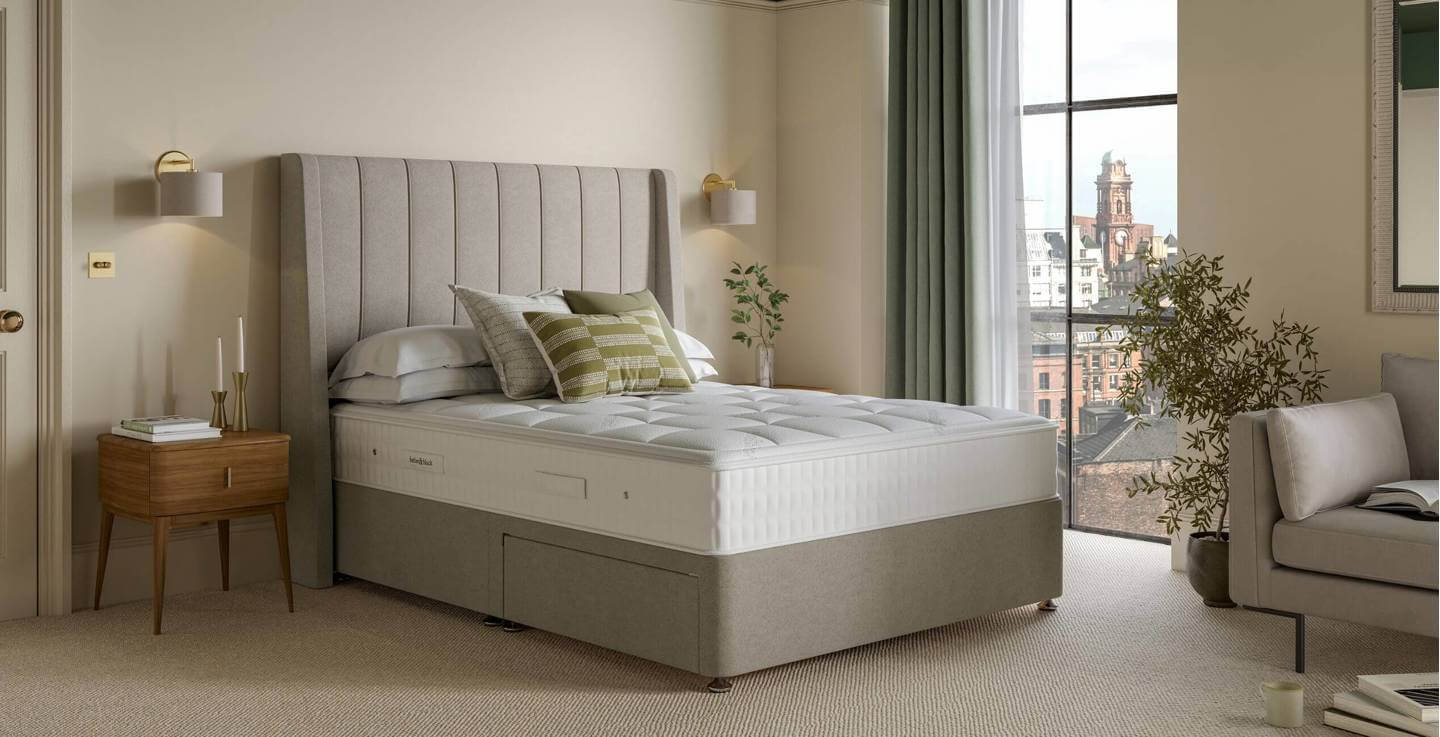When to Replace a Mattress: A Guide to Lasting Comfort
Find out how often you should replace your mattress, the signs it's time to change, and how to maintain lasting comfort, support and restorative sleep for years.
A well-made bed begins with a mattress that supports more than just your body. It should enhance your rest, posture and overall wellbeing. Over time, even the most beautifully crafted mattresses will begin to lose their integrity. Knowing when to replace your mattress is not about a fixed number of years. Instead, it is about noticing the subtle changes in comfort, support and the quality of your sleep.
This guide will help you understand your mattress's longevity, the signs that suggest it is time for a change, and how often you should replace your mattress.
Understanding mattress lifespan: How long should you keep a mattress?
The lifespan of a mattress is shaped by several factors, including the quality of its craftsmanship, the integrity of its materials, and the level of care it receives over time. Even the most meticulously made mattresses should typically be replaced every 6 - 8 years to preserve comfort, hygiene and to ensure you get a sound sleep every night.
Over time, natural settling of the materials, gradual loss of spring resilience and the inevitable impact of daily use contribute to a subtle decline in performance. These changes may not always be immediately visible, yet they can quietly erode the quality of sleep. Recognising the signs early ensures that your mattress continues to deliver the rest, proper spinal alignment, and sense of serene luxury it was originally intended to provide.
How long does a memory foam mattress last?
Memory foam mattresses, while offering excellent pressure relief and a cocooning feel, may have a slightly shorter lifespan than pocket-sprung alternatives. On average, memory foam can last between 6 – 10 years as they’re designed to bounce back after use, but the maintenance is also a key factor. Whilst pocket sprung mattress generally last between 6 to 8 years. Regular rotation and ensuring a breathable sleep environment can help preserve the integrity and responsiveness of memory foam over time.
Key signs it is time to replace your mattress
The clearest indicator that it may be time to replace your mattress is a noticeable change in the quality of your sleep. If you begin waking with stiffness, aches or a sense of restlessness, your mattress may no longer support your body as it once did.
Visible sagging, lumpiness or unevenness across the surface of your mattress are physical signs that the internal structure has begun to deteriorate. Springs that creak or make noise when you move suggest that the core is losing tension, impacting both comfort and the durability of the sleep surface.
Worsening allergy symptoms during the night may also point to an ageing mattress. Over time, even with good hygiene practices, mattresses can harbour dust mites and allergens, impacting the freshness and health of your sleep environment.
For co-sleepers, you may increasingly feel your sleep partner’s movements throughout the night, which suggests that the mattress has lost its ability to isolate motion. A loss of motion control can significantly disturb your ability to enjoy deep, uninterrupted rest. For a truly tailored sleep experience, consider the quiet versatility of a zip and link mattress, designed to seamlessly unite your preferred mattress tensions.
Any of these signs, either alone or together, are strong indicators that your mattress has reached the end of its lifespan, and it’s time to replace your mattress.
Mattress longevity and how to extend it
Although every mattress will eventually need replacing, thoughtful care can prolong its performance and comfort, leading to a better night's sleep. Rotating your mattress every three to six months ensures even wear and helps maintain a supportive sleep surface across all zones. For more expert guidance, visit our mattress care guide.
Using a breathable mattress protector shields the mattress from moisture, dust and allergens, preserving its internal structure and fabric exterior. Ensuring your mattress rests on a well-ventilated and supportive bed base encourages airflow, helping to regulate temperature and prevent material breakdown from trapped humidity.
When selecting a new mattress, we recommend choosing materials crafted with natural, breathable materials such as wool, hemp, or cotton to enhance longevity. These fibres are naturally resilient and promote a fresher, drier sleep environment.
Just as your mattress should be replaced to protect your sleep quality, upgrading your bedding at the right time can further elevate your sleep sanctuary. Explore our expert guide for thoughtful advice on renewing your bedding essentials and enhancing the overall feel of your bedroom.
Redefining rest: A thoughtful investment in better sleep
A mattress is far more than a functional necessity. It’s a personal investment in your well-being and everyday vitality. Explore the Feather & Black mattress collection to discover thoughtfully designed mattresses crafted for restorative sleep, enduring support and everyday luxury.
